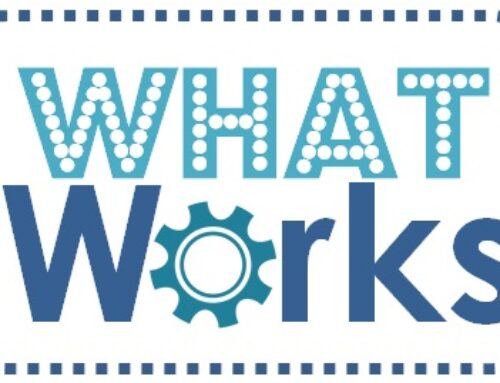5 Keys to Effectiveness in Work and Life
October 28, 2018
Categories: Effectiveness
The other day, I had an interesting conversation with one of my graduate students. The semester was getting really busy, and he was having some trouble balancing his commitments and maintaining progress on his research. He asked me if I had any recommendations for how to navigate the semester. Here are my 5 keys for effectiveness in work and life:
Key #1: Own Your Schedule
My first piece of advice is to own your schedule. Too often in life, we drift through our days, moving from activity to activity in a haphazard manner. This isn’t an effective way to live. If you want to get a lot of things done and still have time for your friends and family, you have to own your schedule. Here’s a technique that has worked well for me:
- Schedule in every hour. Purchase one of those large planners that divides each day by the hour. Plan out each hour—write down what you are going to do for each hour of the day. Don’t leave anything blank.
- Schedule in work, fun, and rest. Don’t just schedule in your work tasks. Schedule in EVERYTHING. Schedule in a date with your spouse. Schedule in your exercise. Schedule in time to play with your kids. Schedule in reading a book for leisure. Schedule in your happy hour.
- Plan your schedule for the week on Sunday night. Carve out an hour on Sunday night to plan your schedule for the next week.
- Review your schedule for the next day. Carve out 15 minutes each evening to review your schedule for the next day. Make changes if necessary.
Owning your schedule in this way might feel a little strange at first. But trust me, it works. When you schedule everything, you begin to realize how much time you waste on unimportant things, such as TV, email, or social media. Also, by scheduling in everything, you can make sure the way you spend your time is consistent with your values and priorities. Finally, it helps you to be more assertive with your time. Sometimes people struggle to say no to various requests. But if you own your schedule, you can say no confidently. “4pm on Friday? Unfortunately, I have a commitment” (even if it’s playing with your kids). “What does your schedule look like next Tuesday?”
Key #2: Set Your 3 Most Important Tasks
Most people have the tendency to organize their day in a reactive manner. For example, they begin their day by checking email. From the opening bell, they are responding to the needs of others, rather than focusing on their own priorities. Setting your 3 Most Important Tasks (MITs) is a way to be proactive rather than reactive.
Here’s how it works: In the evening, think about your 3 top priorities for the next day. These should be tasks that you can complete in less than an hour. (If you are working on a long-term task, select a chunk you can complete in less than an hour. For example, when I’m working on a book, one of my MITs is often to write 1 page in my book.) Write down your 3 MITs for the next day.
The next day, complete your 3 MITs before you do anything else. Don’t open email, don’t return phone calls, just focus on your 3 MITs. Get up, stretch, and take a 10-minute break after finishing each MIT. Once you finish your 3 MITs (ideally by around lunchtime), THEN you can open up your email and begin responding to the various people who want something from you.
Key #3: Focus on One Thing at a Time
Most of us have the bad habit of switching back and forth between several tasks. For example, you might get started on a task, but then you hear a ding. Your email is open, and the ding lets you know you have a new email. So, you switch over to your email, read your message, and respond. Then you go back to your original task, but it takes some time to remind yourself where you were. You start working for a bit until you are interrupted by another ding.
Task-switching is a productivity killer. The solution is to structure and organize your environment so that you can focus on one thing at a time. Here are some tips:
- Focus on one task at a time. Don’t multi-task.
- Don’t have your email open while you work.
- Turn off all notifications on your phone.
- Better yet, turn off your phone completely while you work.
- Delete social media apps from your phone.
- Shut the door to your office.
- Work in a quiet place like a library.
Key #4: Treat Email Like a Work Task to Complete
When I talk with people about their struggle to carve out time in their work day, email is the #1 culprit. Email takes up A LOT of time. Some people get over one hundred emails per day. How can you get any work done when you are responding to so many email messages?
I’ve already talked about one thing that can help—completing your 3 MITs each day before checking your email. Here’s another email principle that has been a game changer in my life: Treat your email like a work task to complete.
Here’s what I mean: most people are always on their email. They have their email open while they work, and they respond to email throughout their day. A lot of people even have their email on their phone, and get a buzz whenever they get a new email. This way of doing email is a productivity killer.
Instead, treat your email like a work task to complete. Put “responding to email” on your work schedule. I recommend checking email once per day. For example, maybe 1-2pm is your email time. Focus all your energy on this task, and work through your inbox. When you’re done, you’re done. For the rest of the day, no email. If you feel the need to check email more than once per day, limit it to twice per day (e.g., 10-11am and 4-5 pm). Don’t let your email run your life. Only work on email when you put it on your schedule.
Key #5: Schedule in (and Limit) Timewasters
After email, the next biggest problem is timewasters. A timewaster is an activity that takes up a lot of time in your day, but doesn’t directly contribute to your most important goals. For many of us, timewasters include things like checking social media, reading blog posts or articles online, and watching TV.
Timewasters tend to creep into each part of our day. If I have some down time, for example, I might as well check my Facebook or browse Twitter. Nothing going on right now? Let’s see what’s on TV. Before we know it, we are spending WAY more time on timewasters than we want.
The key is to schedule in (and limit) timewasters. Social media isn’t a bad thing. But be honest with yourself—given your values, goals, and priorities, how much time do you want to spend on social media each day? Maybe it’s 15 minutes. Maybe it’s 30 minutes, or one hour. Make a decision, and schedule that time into your day. When it is your scheduled time to browse Twitter or Facebook, go all in and enjoy it. But the rest of your day, no social media. Ask yourself similar questions about reading articles online, TV, video games, or whatever else you do during your day.
Discussion
Are you struggling with effectiveness in your work and personal life? What do you think of the five keys? Which key could you implement in your life this week?

Related Thoughts

Subscribe To My Newsletter
Join my mailing list to receive the latest blog posts.
Receive my e-book “The Mental Health Toolkit” for free when you subscribe.



